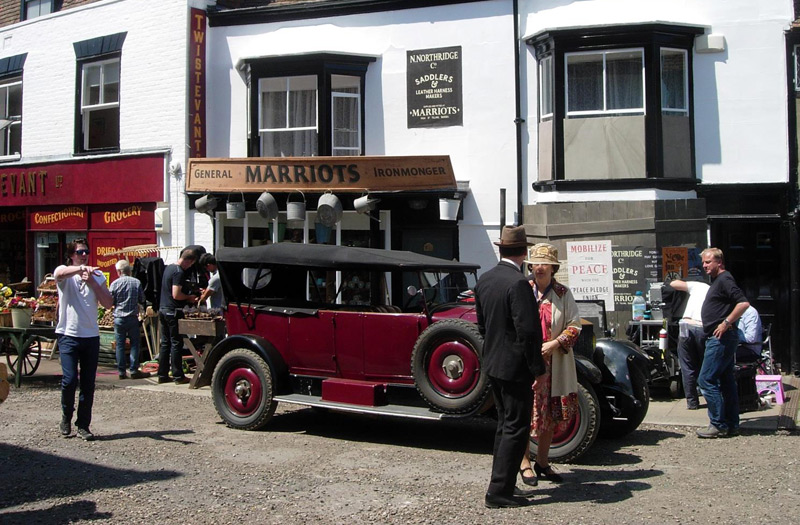Aficionados of EF Benson’s Mapp and Lucia books will, no doubt, recall the occasion in Lucia’s Progress, published in 1935, when Lucia, the new chatelaine of Mallards (sorry, Mallards House) believes that she has discovered Roman remains in her asparagus bed. Sadly for her, the Roman flue was nothing more than a drain pipe made by the local plumbers, Spencers, founded in 1820, whilst the green glass sacrificial vessel turned out not to have a connection to Apollo but was, instead, a broken Apollinaris mineral water bottle.
The question of course is were the Romans ever in what is now Rye? We know that they were in the area. Emperor Claudius sent an army to this country in AD 43, with the intention of conquering all of it. The initial invasion force was divided into three units, based in Dubris (Dover,) Rutupiae (Richborough) and Lemanae (or Portus Lemanis) which is now Lympne, with the remains of a shore fort – Stutfall Castle. The countryside around Canterbury was one of the main areas from which the invaders controlled Britain.
Wealden ironworks were taken over as part of the Roman empire. Control over them was exercised by the Classis Britannica, the imperial fleet, for more than a quarter of a millennium. Remains of Roman period ironworks has been found in the villages around Rye – Peasmarsh, Brede, Broad Oak, Beckley and Icklesham. Excavations at Beauport Park near Hastings have revealed a Roman period bath house, which was part of the ironworks there.
The finished iron was carried along roads specially built on ridges in the landscape, which were a link between the local ironworks. One such was excavated in Icklesham a few years ago. From here the iron was sent for export from ports or wharves on the local rivers Brede and Rother and in the estuaries.
Defending these ports, and thus the lucrative trade, from Saxon pirate raids that began during the third century AD became essential. By AD 428 a string of coastal forts had been established for about 100 years. We know that there were at least 10 forts, commanded by the count of the Saxon Shore. One fort between Anderida (Pevensey) and Portus Lemanis was named Riduna. This, the available surviving records show, was Rye. Sadly, there is no mention of its exact location. What we do know is that what was then Rye was a major storage and export point for locally produced iron.
So, perhaps if Lucia had continued with her excavations, she may have found genuine Roman remains. Poor Mapp though, she would never have found the remains of the Ark of the Covenant in an apple tree at Grebe, despite her saying, in yet another of her usually futile retaliatory barbs, that was perhaps what she should do.
Image Credits: Rye News library .



